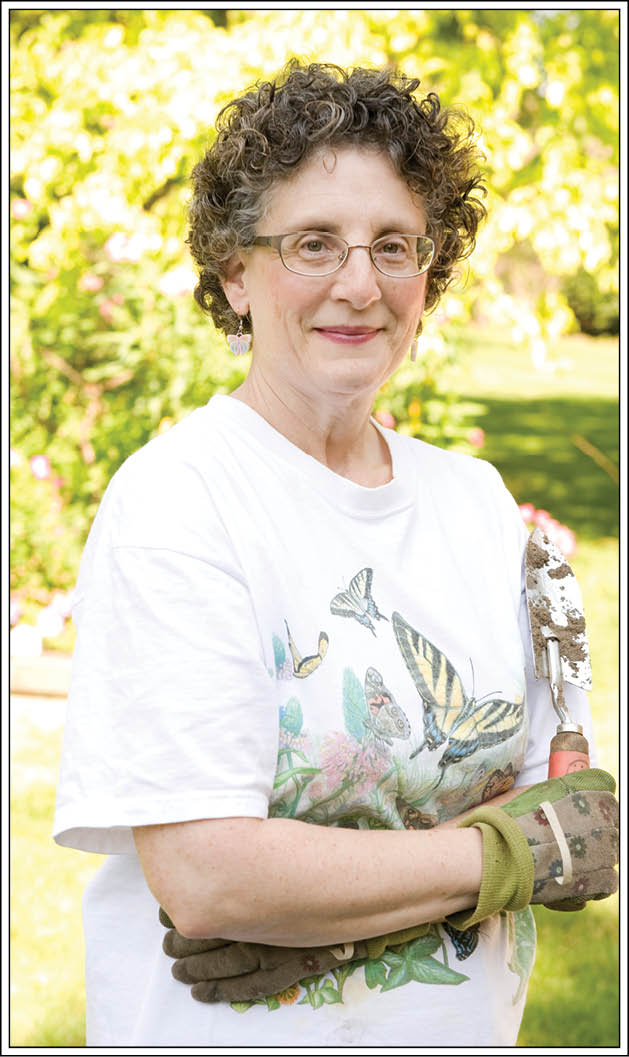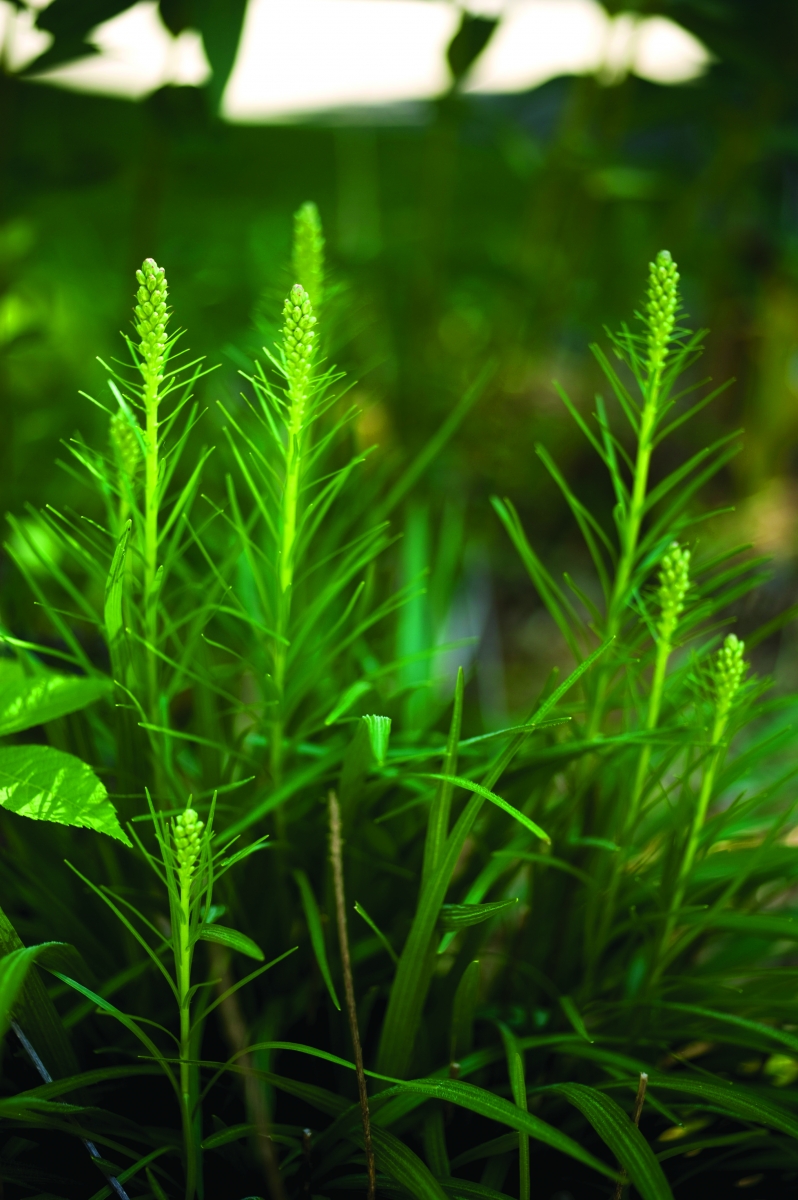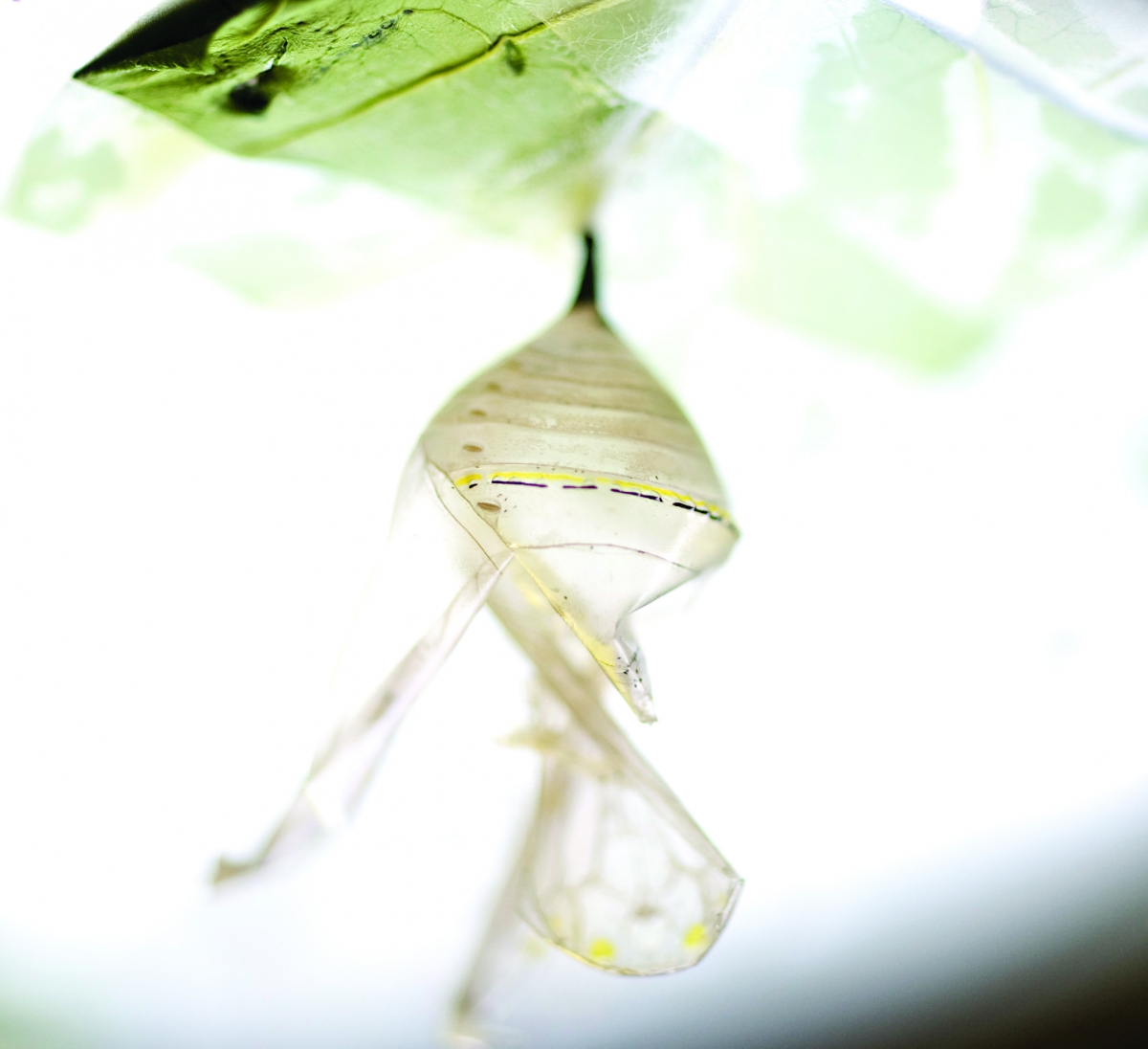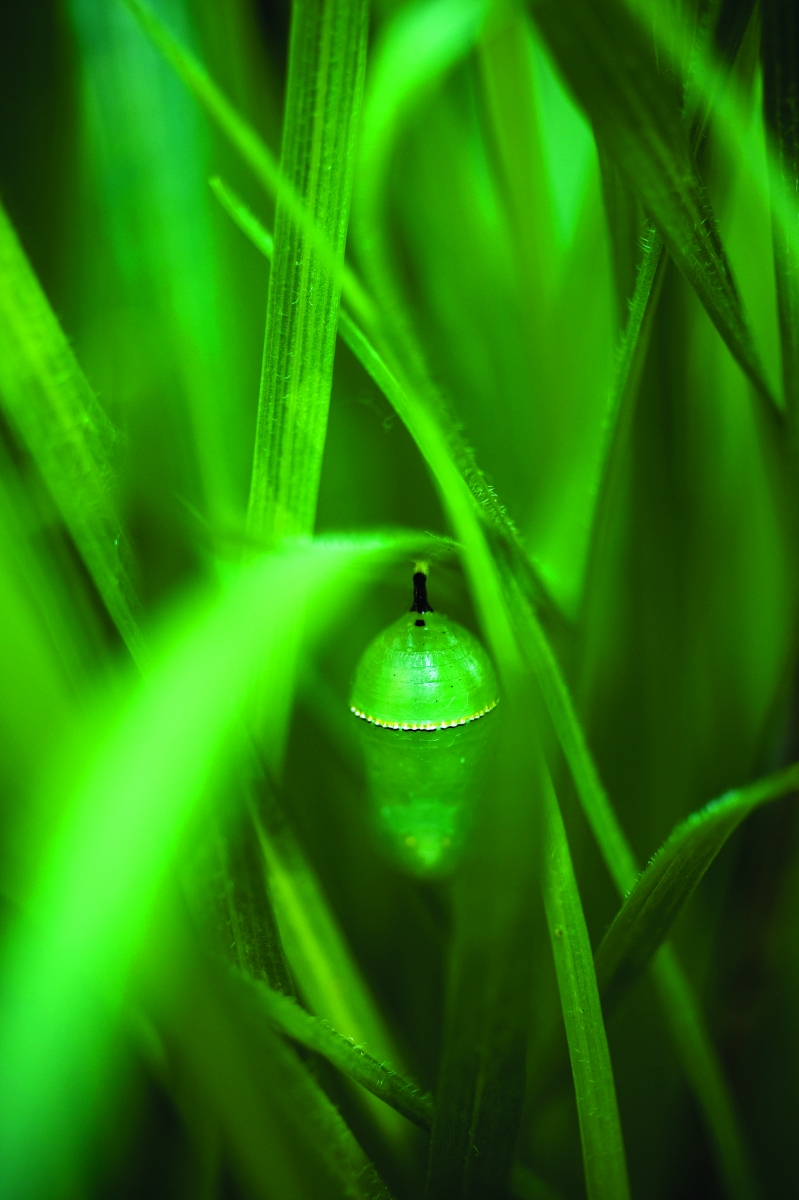Like the monarch butterfly, which migrates from places such as Minnesota to Mexico, Gloria Rice’s interest in butterflies originated with a move. Her journey wasn’t traversing the continent, however; she simply moved from a townhouse to a home with a yard in Plymouth back in 1997. “It was all right at my fingertips,” Rice says of the potential wildlife she envisioned visiting her yard.

(Butterfly Gardener Gloria Rice.)
Within the first year of owning her new house, she set out to create a welcoming habitat by installing raised beds in her yard dedicated to plants that would appeal to bees, birds and, of course, butterflies. “It was an empty canvas here,” Rice says. “We planted everything.”
Today, 16 years after building the planting beds, she and her husband, Tim Cassidy, enjoy a plethora of wildlife thanks to the selection of plants in her garden. From Liatris to swamp milkweed to Viburnum, Rice’s garden is set to welcome back the migrating birds and insects from their winter homes again this year.
Beyond beauty, butterfly gardens are becoming more important for the environment. “While monarchs aren’t endangered, their migration is,” explains Wendy Caldwell, monarch joint venture coordinator at the University of Minnesota’s department of fisheries, wildlife and conservation biology. The connection of the loss of habitat from Canada through the United States and into Mexico leads to fewer monarchs being able to find a key plant for their survival: the milkweed.
“Milkweed is the most important for monarchs because the larvae can only eat the milkweed species,” Caldwell says. “They need milkweed in order to reproduce and survive.” Removal of their natural habitat, including the key milkweed, through additional housing and farming developments has led to migratory issues for the monarch.
A generation of students has learned about the migration and the wonder of the monarch under the tutelage of Jill Freshwaters, a third grade teacher at Plymouth Creek Elementary School. An advocate for getting kids hands-on experience in understanding the monarch, Freshwaters has been educating kids on the subject for seven years, and has spent nearly two decades in the Wayzata school district.
“I like the science in gathering the caterpillars and milkweed with the kids,” Freshwaters says. “You can really hit lots of areas of math and science—and, like me, the kids are stunned and amazed when they see these beautiful butterflies.”
Freshwaters is one of many teachers who have gone through the University of Minnesota’s “Monarchs in the Classroom” program that provides teachers with curricula for grades K–6 to encourage their students to learn about monarchs and build their science skills. Until recently, there was a prolific butterfly habitat near the school. “Our school overlooks Plymouth Creek, where there are a lot of natural plants. It’s a small area, but it’s so rich,” she says.
When that habitat was culled, a group of parents stepped in to begin creating a new butterfly garden with Freshwaters’s expertise. Now she is looking forward to getting back to teaching about monarchs. “I just think that promoting science for kids in a motivating way is so important,” she says. “It helps them appreciate the earth more and maybe makes them more open-minded to protecting it.”
The good news is that nearly everyone can contribute to regaining the monarch’s foothold. Even better news is that by planting a butterfly garden, a positive impact will also be made on other pollinators, such as hummingbirds, moths and, importantly, bees. From full-scale restoration projects to potted plants, providing native plants that appeal to pollinators can make a difference. “Every ounce of habitat helps in one way or another,” Caldwell says.
With milkweed being the key to the monarch’s survival, starting a butterfly garden around that species is a solid move. Swamp milkweed has a delicate purple flower and is more manageable for smaller gardens than the common milkweed. The butterfly milkweed provides bursts of orange flowers, similar to the color of the monarch.


(Right: Monarch on swamp milkweed (Asclepias Incarnata) blossoms. Left: Blazing star (Liatris) buds before blooming into purple flowers.)
Whether your yard has marshy areas or enjoys well-drained soil, there is a native milkweed that can be grown. The key is to use seeds or plants that haven’t been treated by pesticides. “You want to avoid neonicotinoids—these are the systemic pesticides,” Caldwell says. “It is absorbed into plants and stays with it longer. The pollinators ingest the chemicals” when taking in nectar.
To find plants and seeds that haven’t been treated with neonicotinoids, Caldwell suggests asking locally owned nurseries whether or not their stock has been treated. She also points to The Xerces Society, an online resource for invertebrate conservation. “You can query by state to find nurseries that sell milkweed seeds. It doesn’t include every nursery, but it’s a good place to start.”
She also recommends contacting local master gardener or naturalist groups to tap their expertise. “The larger-scale, more well-known native plant nurseries, like Prairie Moon Nursery and Prairie Restoration,” are also good resources, she says, but she believes smaller local nurseries might stock native, non-treated milkweed seeds.
In addition to milkweed, there is a plethora of native plants enjoyed by monarchs and other butterflies that will also leave your yard the envy of the neighborhood. In planning her garden, Rice used a book published by the Minnesota Department of Natural Resources called Landscaping for Wildlife. In it are both great descriptions of plant varieties and plans for a wide range of gardens. Each plan resembles a paint-by-numbers canvas, which makes it easy to follow for novice gardeners.
The best butterfly gardens bring beauty and nourishment from the spring through the fall. “The adult monarchs need nectar sources in the fall,” Caldwell says. “They need an abundance of nectar to survive the journey” to Mexico. Caldwell recommends Liatris, which she calls “a monarch magnet in the fall.”
Rice knows this trick well. From tiger swallowtails to skippers and painted ladies, her garden is a popular spot for butterflies. She sees the larger butterflies on her bee balm plant, and believes they like the black-eyed Susans as well. One find will appeal to many Minnesotans: “Typical lilacs bloom before the butterflies are back,” Rice explains, which is why she enjoys her late-flowering lilac bush.
Pollinator-friendly plants can provide a habitat and nourishment for important pollinators, such as the monarch. “Even a small backyard garden definitely helps,” says Caldwell. “We always encourage people to put in a butterfly garden and then share their photos.” Rice wholly agrees, for once you have a blooming butterfly garden, “get your camera ready, because they’ll be posing for you.”


(Right: Gold-laced green monarch chrysalis (cocoon) Left: Empty chrysalis after monarch emerges.)






